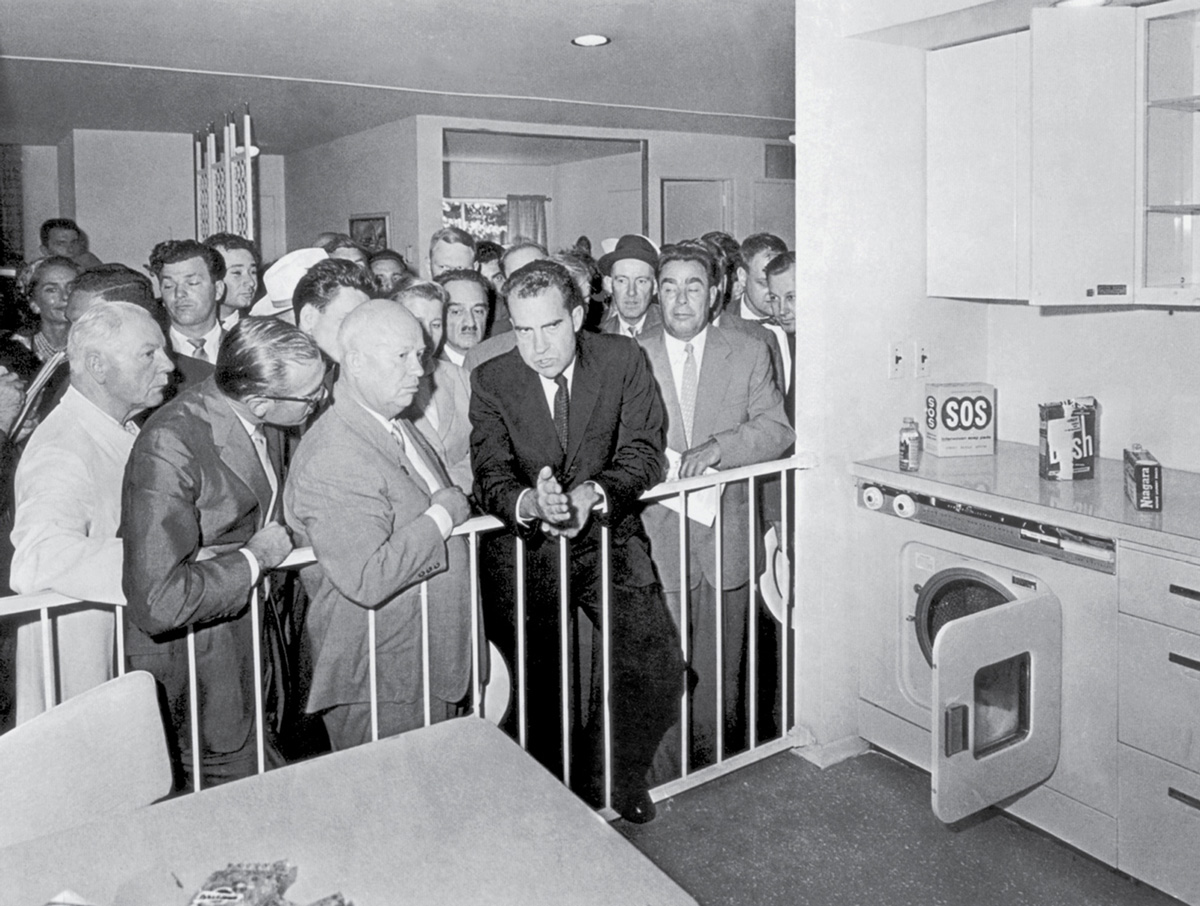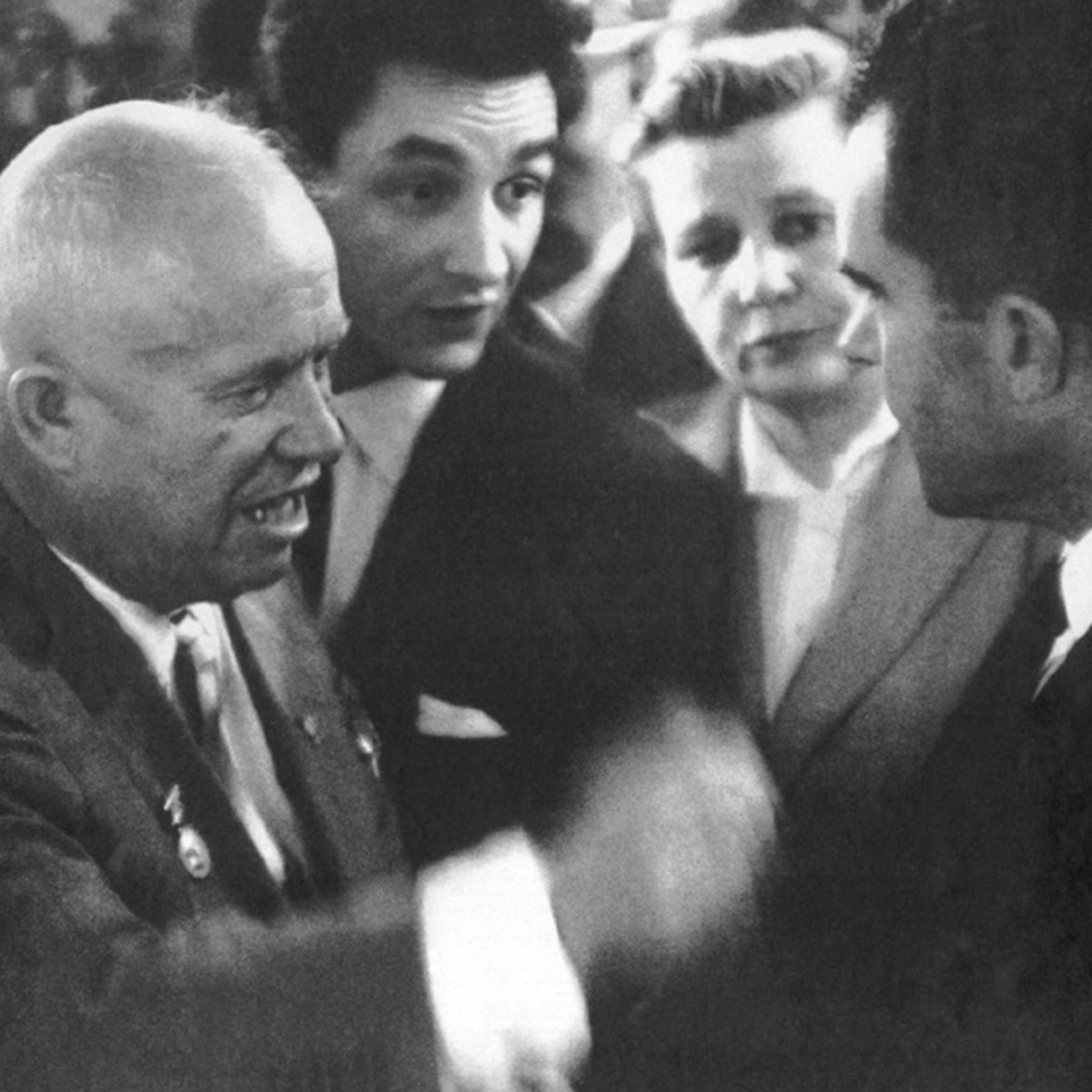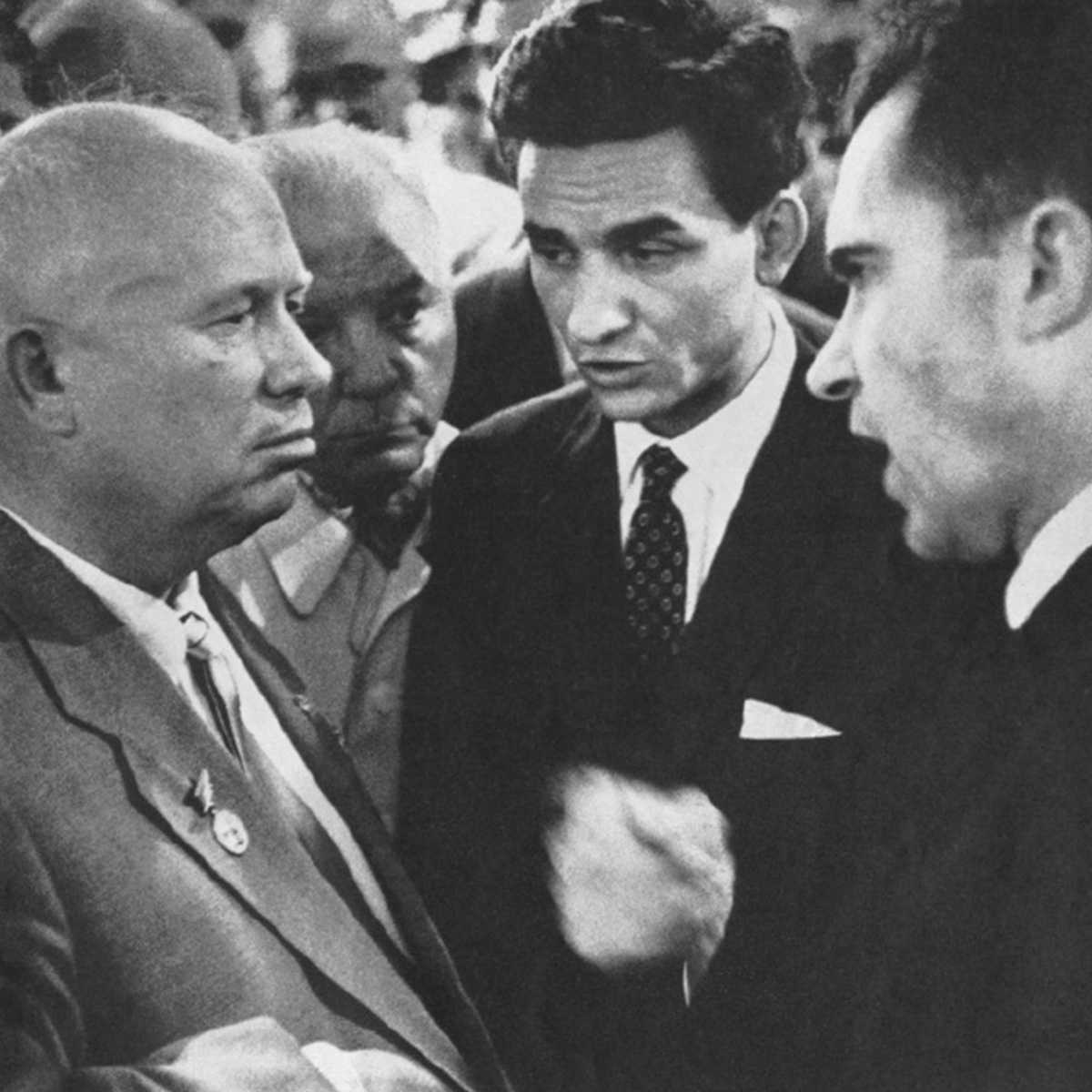Simmering Statecraft
Politics amid the pots and pans
Sandy Isenstadt

The distinctively modern form of the kitchen blossomed with the Austrian architect Margarete Schütte‑Lihotzky’s 1926 “Frankfurter Küche,” which was installed in thousands of units of social housing in Germany. Following principles described a dozen years before by the home economist Christine Frederick (who in turn drew on Frederick Winslow Taylor’s time-motion studies intended to help streamline factory labor), Schütte‑Lihotzky designed task-specific, built-in cabinets, along with hinged and sliding surfaces that could be swiftly summoned, used, and stowed away, making room for the next step in the dinner algorithm. By concentrating utility precisely, as in the compact kitchens of ships and trains, she diminished the spatial concessions to convenience and pared the minutes required for particular chores. And she placed a large window at the end of the narrow galley to assure that all surfaces would be washed with bright, natural light. As it began to orbit around similar ideas of frictionless functioning, modernism saw in the kitchen a confirmation that it was the style most intimate with the industrial Zeitgeist and could therefore transcend the question of style, and national origin, altogether.
But streamlining function was never the ultimate aim of any version of modernism. Rather, the benefit of a rationalized architecture was a liberated individual, a man or woman freed from drudgery because mechanization had overtaken repetitive and spiritless tasks. In this context, the kitchen became a place not simply to do certain things; it also became a place to display those doings. It was a space where efficiency itself might be aestheticized, that is, a modern kitchen not only was efficient, it looked efficient, and so came to symbolize the virtues of a design approach that abjured symbols. In other words, the kitchen’s representational value became just as important as its use value; together, an uneasy alliance of usefulness and representation underpins our understanding of the modern kitchen.
With the general acceptance of modernism after World War II, the symbolic value of the kitchen became only more important. Widespread electrification and greater use of small countertop appliances allowed various kitchen functions to be spatially concentrated even further. But whatever efficiencies were gained were usually cast, in the context of an American consumer society, less in terms of greater productivity than in terms of more leisure, that is to say, making women’s labor within the kitchen more efficient ostensibly freed them for activities outside the kitchen. With leisure the benefit, manufacturers such as General Electric could, without irony, begin their appliance catalogs with an invitation to “Come out of the Kitchen and Enjoy Life.”


That such an understanding was commonly held was demonstrated by the “Kitchen Debate” that occurred between Soviet Premier Nikita Khrushchev and US Vice-President Richard Nixon, in front of a model kitchen on display at a trade exhibition in Moscow, on 24 July 1959. The United States Department of State had at least a decade earlier launched a series of exhibitions, from fine arts to consumer goods, to alloy the nation’s decisive wartime show of economic and military superiority with claims of cultural richness and breadth. The private home, the crowning good of American consumer culture, was a frequent star in such events, which proved deeply compelling to those whose lives had been interrupted by Fascism and war. Domestic themes resonated strongly with pre-war memories and postwar hopes of tens of millions of Europeans, although American visions of impending bounty were as often disparaged as they were envied. Nixon continued such themes in Moscow, asserting that the United States’ global leadership was not based on its vast arsenal so much as on the fullness of daily life for the average family. He granted, for example, that the Soviet Union had better rocket engines but Americans had color television. Khrushchev, guardedly admiring the American kitchen appliances, promised in any case to surpass American consumer goods within a few years, and he indicted American industry more broadly for depleting itself on gimmicks and gizmos. The Soviet Union, he claimed, instead focused on making women more productive in their domestic work. On the defensive, Nixon countered, “What we want to do is make easier the life of our housewives.” The US was an aggregate of families, he suggested, and so an easier life legitimated a national economy based on consumer goods—such as those the two leaders stood before—and validated the spread of consumer capitalism worldwide.
Kitchens, it was clear, were no less ideologically charged for Khrushchev. At least since 1952, the improvement of everyday standards of living had become an explicit theme of the Soviet government, with private, rather than communal, apartments a new means to assuage a housing shortage and enhance daily life. Women, in particular, were recognized as captains of domestic consumption and so took on a new role in the national economy. Soviet planners turned to earlier models of rationalized design (Lenin himself had admired what he called “American efficiency”) that could reconcile greater consumption with communist principles. Kitchens, as the domestic center of command and the most visible site of women’s labor in the home, came in for renewed attention. Although sponsored by the state and explicitly in service to political ideals, the kitchen was portrayed as a matter of personal convenience, family well-being, and national potency. Both versions of Cold War kitchens helped redeem the labor of women, although the economic value of domestic labor in the Soviet model took a back seat to the promise of leisure in the American version. But, as has often been noted, easing the labor of women in the private sphere of the home was not at all the same as guaranteeing them a position in the public sphere.
Sandy Isenstadt teaches modern architectural history at Yale University. His book, The Modern American House: Spaciousness and Middle-Class Identity, a study of visual space in the architectural, interior, and landscape design of American houses, was published in 2006.